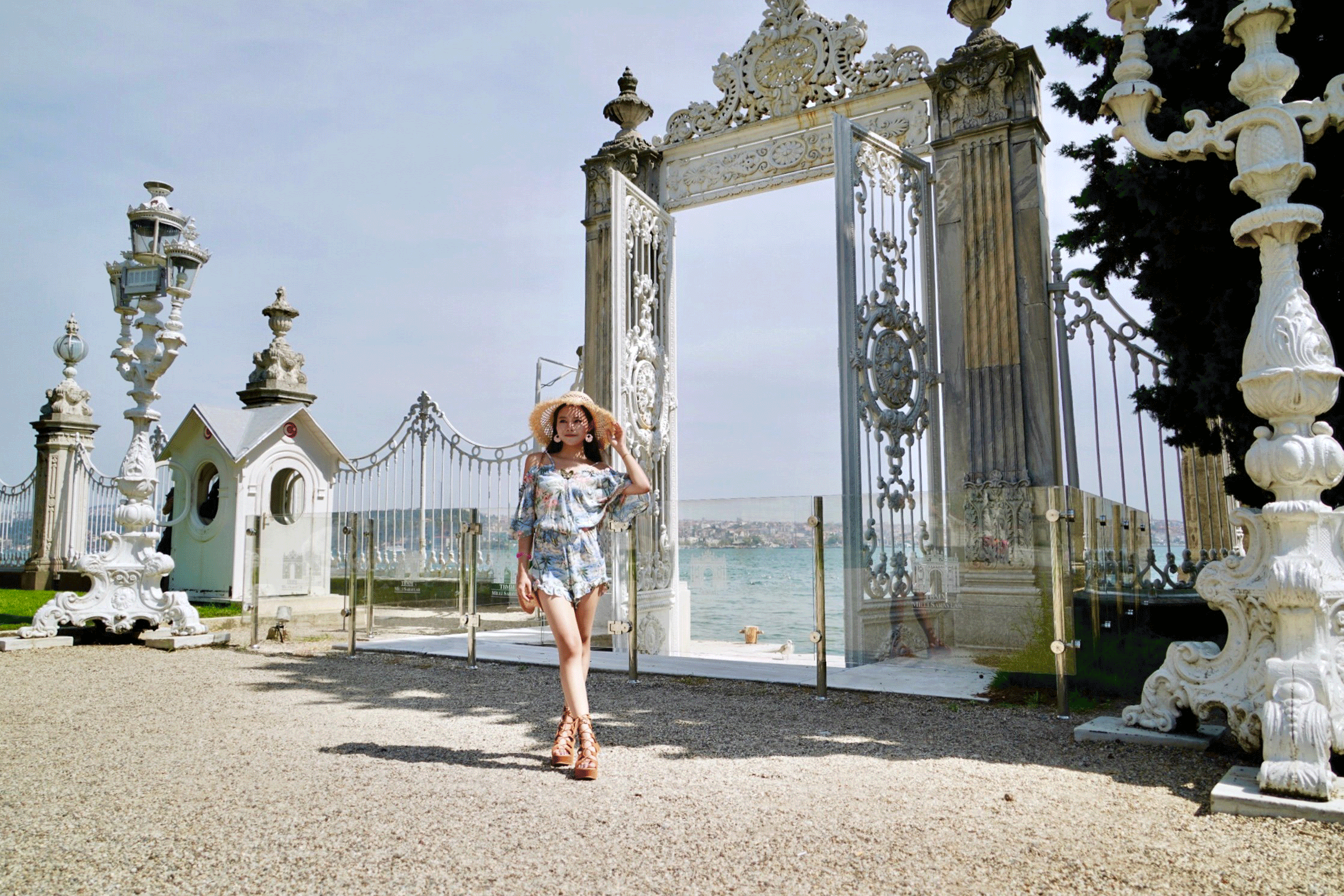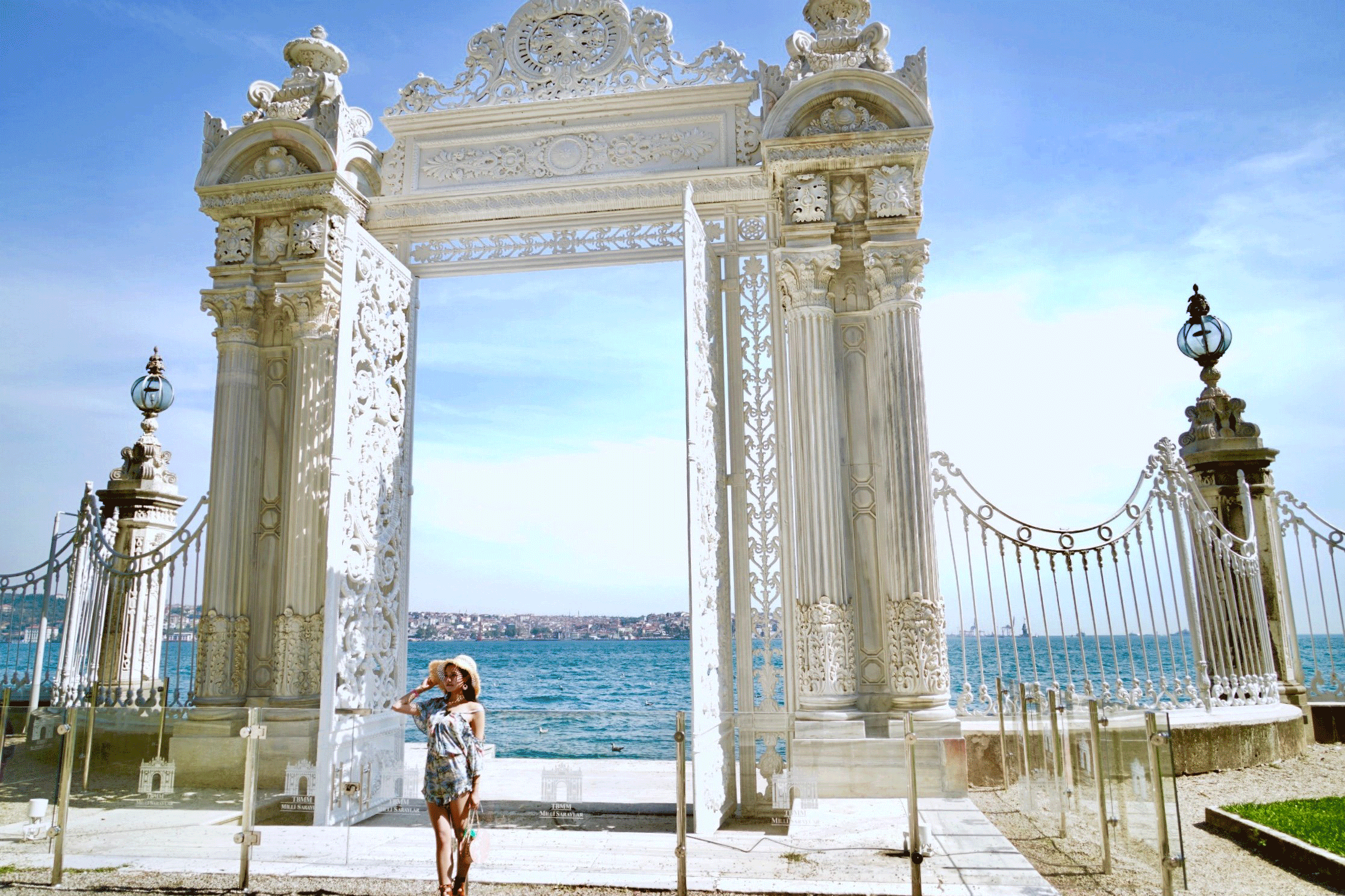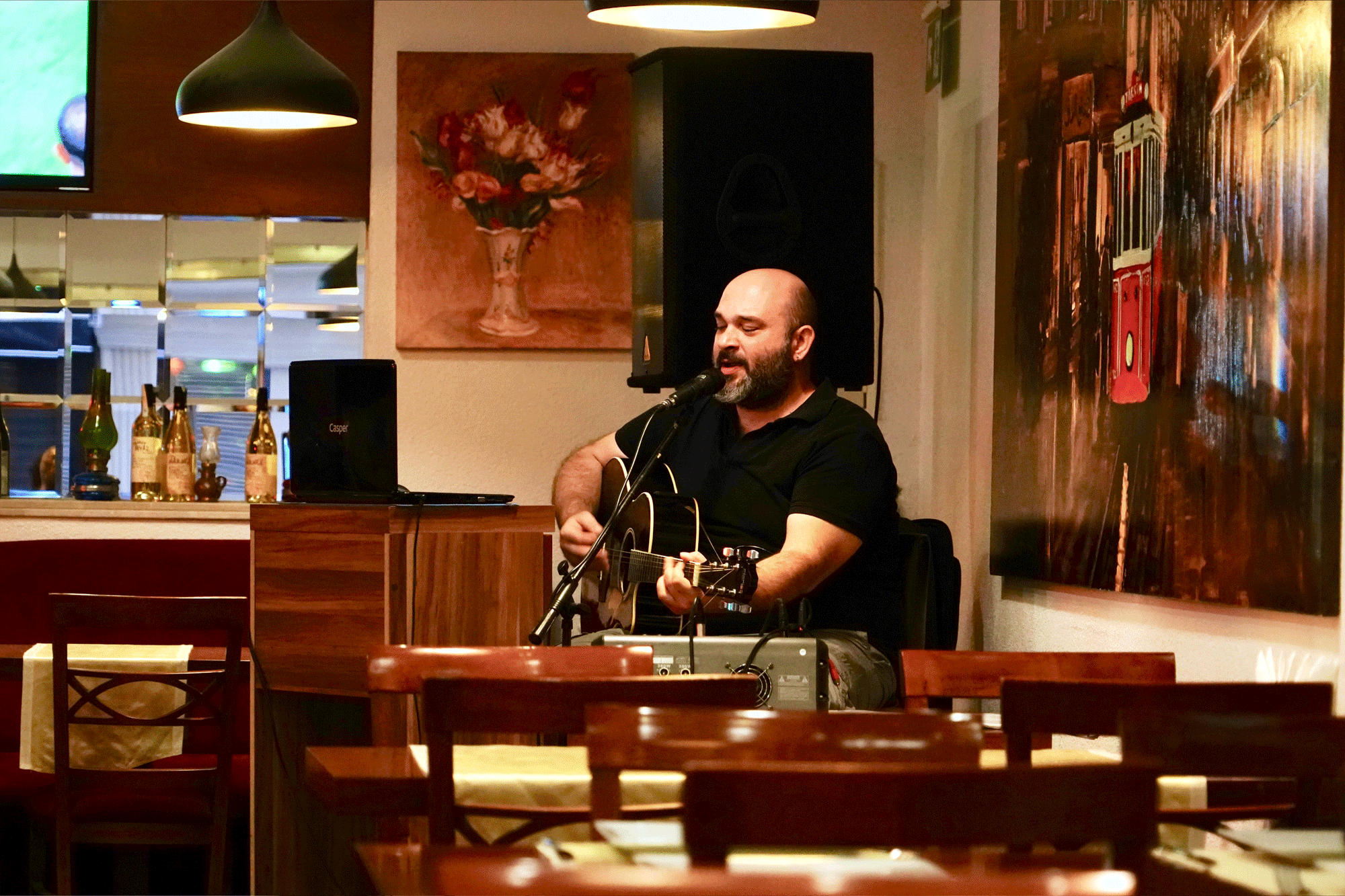
Dear Steemit Friends:
I cannot wait to share this adventure with you today. We continue our exploration of Istanbul's amazing historical and cultural buildings as we visit the Dolmabahçe Palace, home to the 31st Sultan of the Ottoman Empire Abdulmecid I. As you will see today, this beautiful palace was built to rival the luxury and elegance of the castles and chateaus of many of the aristocracy of western Europe. Abdulmecid I built this new palace and moved his family here after the thirteen year construction finally came to an end in 1856.
The Dolmabahçe Palace was the last palace in the country where a Sultan lived, because in 1922 the Republic of Turkey was formed, with the first president being elected in 1923. This effectively marked the end of the Sultanate, with the last royal to live in the palace being Caliph Abdulmecid Efendi. In 1924 the control of the royal palace passed to the national heritage of the Turkish Republic. After this time it was used by Turkey's first president, Mustafa Ataturk as a summer residence and where he also spent the last years of his life.
As you will see, the beauty of this place matches its rich history. Elaborate, ornate, well preserved and decadent, this Dolmabahçe Palace is a sight to behold. Come with me now as we explore the gorgeous stone work of this, the largest palace in Turkey.

Here, at the Gate of the Treasury we get our first glimpse of the beautiful architecture of the palace. The styles that have been used in the design and construction of the palace have been described as Neoclassical and Baroque, still with plenty of hints from a more traditional Ottoman style. In art and architecture, Neoclassical has a few meanings and complexities, but in essence seeks to revive key features from classical antiquity, such as the majestic columns and white stone walls you'd see in ancient Greek architecture.

You can see how this form is then blended the more Baroque style of architecture which holds its roots in 16th century Italy, characterised by its ornate design, exploration of light and shadows in the design and for its size and drama. I'm sure architecture buffs would have a much better idea of the differences than I, all I know is that the desire to create something to rival the palaces of Italy and France, along with a budget of five million Ottoman gold lira (around 1.7 billion US dollars), created something breathe taking.

You can see from the stone work, that thousands and thousands of hours of work went into the creation of this dramatic palace. Every inch of the building is meticulously decorated, hand carved into the beauty you see today. But not only that, the Dolmabahçe Palace also gives even the largest palaces in the world a run for their money. At over 45,000m² set in 110,000m² of land, it is huge. The six Sultans that lives here between 1856 and 1924 could have slept in a different room each night and only slept in the same room three times per year.
Let me try to give you a sense of the size. There are 285 rooms in the palace itself, 6 full sized Turkish baths and 68 toilets! What could you possibly need 68 toilets for? I guess the palace was so big that it meant there was always one nearby, otherwise you might have to walk for half an hour to go to the bathroom!

Some close ups of the ornate stone work on the Gate of the Treasury

I am not sure, because I didn't have a buggy with me (surprise!), but I believe that no strollers were allowed inside the palace itself. So, what happened was this very comical line of buggies abandoned outside the gate! I hope that no-one got confused as to which one was theirs. I loved this scene because it contrasts the ornate white stone facade of the palace with the steel and glass of the modern building that you see rising up behind. Modern architecture meets classic architecture.

One of the most impressive features of the Gate of the Treasury is the gates themselves. Towering over six meters tall, they are beautifully carved and kept in the same impressive white as the stone work around them. It creates this illusion that perhaps the gates were also carved from the same solid white stone as the gateway around them. This makes them feel extra special, because you know how impossible and intricate it would be to carve gates like these out of stone - and of course they aren't carved from stone. They would be too heavy for their hinges and also, not very strong! They would crack. The gates here are probably made of either wood or metal but I couldn't tell because of how well maintained the paint work on them was.

Enjoying some of the green space around the palace

Can't get enough of that view, the architecture is some of my favourite I've seen in a European Palace. The symmetry is just amazing while the grandeur and size is hard to explain with a photo!
Inside the palace grounds and gardens

Within the gates, the grounds of the palace are extensive. They are beautifully manicured and feel like a Victorian formal garden. Plenty of straight lines, wide avenues and many water fountains and statues. There is such a range of different plants and trees, many of which you'd consider quite western European, such as fir trees. You can see how Abdulmecid I wanted to create a palace to rival the palaces of France and Italy, right down to the final details of importing similar foliage for this garden's design.

Very popular in Victorian era formal gardens were water features. They spoke of wealth, that you could have water just for decoration rather than for the important function of hydration. Obviously in much of Turkey it can get very hot in the summer so maintaining water features like this holds some extra challenges compared to having them in an English country garden - just another reflection of the lavish wealth spent on creating Dolmabahçe Palace.

The well manicured lawns, colourful flowers, stone statues and clever planting serve to create frames of the different buildings of the palace, wherever you go. Paths lead the eye up to the front doors and pull you through the grounds to see each different building while being in the beautiful greenery. I love how the white of the building pops out from between the trees while never feeling lost.
The name Dolmabahçe literally translates to 'filled garden'. The palace is set on the Bosphorus strait, a famous waterway that marks part of the continental boundary between Europe and Asia, also separating the part of Turkey considered European Turkey with that considered Asian Turkey. It connects the Black Sea with the Sea of Marmara. And that's how the palace gets its name. Originally this area on the bank of the Bosphorus was reclaimed from the waters to create a large park area. The land was literally 'filled' to create a bigger, more stable shore line, compared to the muddy and wet area that there was before. In the 17th century this area would have been used as a place for the Ottoman fleet to drop anchor when not out at sea. The sultan obviously thought this was a beautiful location so worked to increase the structure of the land, making sure the banks of the strait wouldn't erode his gardens, and then building his palace on top!

The Gate to the Bosphorus - a gateway to Asia

The palace itself stands on European Turkey, overlooking the Bosphorus strait onto Asian Turkey. The Gate to the Bosphorus is absolutely fascinating because it's a gate that leads to... well nothing! Or nothing in the traditional sense. It serves two purposes. The first is physical, it provided a beautiful entrance and exit for the Sultan to reach his ships down in the strait. The Ottomans maintains a strong Navy so I'm sure Abdulmecid I would have had his own ship that would dock here, ready to take him anywhere on the coast of the empire if he should need it.
The second purpose of the gate is metaphorical. Istanbul, or Constantinople as it was known for centuries, has always been considered the gateway between the European and Asian continents. Dozens of different empires and rulers coveted the city because it is built in a kind of natural bottle neck between the two continents. If a European power controlled the city, then they controlled the gateway into Asia, if an Asian or African power controlled the city, they controlled the gateway into Europe. The gate symbolises this strategic power and importance of the city.


The gateway stands over 12m tall, with ornate metal work on the gates and of course, stone work on the pillars. So beautifully maintained, the sun bounces off the bright white paint of the gates, making them look almost delicate. Their designs so intricate and befitting their importance and significance to the Sultan, the city and of course, the Ottoman empire at the time.

I felt so tiny next to the grandeur of the gate!

The central palace, a place of size and beauty

There are a few different buildings and sections within the palace grounds. There are the Administrative apartments, obviously designed for the running of the empire and the many people needed to do that, the Ceremonial Hall, the Imperial Harem and the Imperial apartments.. There are of course, many more buildings than just these such as kitchens, barracks, stables, mills, aviaries, carpet workshops and many more. The entire palace

Here you can see just a little bit of the expansive buildings!


Inside, the decorations are lavish, but I will tell you now that I only have a couple of photos of them because you were not allowed to take photos within the main and most impressive rooms. You'll still see the photos from inside that I took, which were from some of the less ornate rooms - you'll see those soon! First let me tell you a bit more about the inside of the palace, since you've seen so much of the outside.
According to the information from my guide, over 14 tons of gold leaf was used to decorate the ornate ceilings and 131 silk carpets were made by hand, over the span of a decade. You are not allowed to go inside without an officially guided tour because the inside is so delicate, rare and expensive. It has many of the worlds finest examples of art work and interior design. Queen Victoria even sent a crystal chandelier as a gift which is the largest in the world, with 750 bulbs! It weighs over 4.5 tons, can you imagine trying to fix that to a ceiling?

In a couple of rooms, you could take photos, where they believed the room was less important. You can see that these rooms are some of the most impressive places that you will see anywhere in the world. From the furniture to the carpets to the ceilings, it's all extravagant and truly amazing. The carvings, the decorations, everything, must have taken hundreds of thousands of hours, by hand, by some of the best artists and crafts people in the entire world. I think even if I was allowed to take photos, I might not have been able to because my mouth would just have been hanging open - and it was!

Leaving the palace after my tour of the rooms inside

The front entrance to the palace for your tour



Within many of these buildings would have lived the Sultan and his close relatives. However, there were also guards, servants and many others living within the palace to serve the Sultan and his family. For example, the palace had two kitchens, one just for the Sultan and one for everyone else. According to my guide there would have been multiple head chefs, in charge of different areas of the kitchen. The head chefs would have 60 chefs beneath them, with 200 assistants to help them. And that was just to make the food! Let alone set the tables, clean the linen, serve the meals and clear the tables. I love food but... even I can't imagine that many people cooking me a meal!

The tastes, sounds and smells of Byzantion Bistro Restaurant

Upon leaving the Dolmabahçe Palace I suddenly felt very hungry so went in search of some local Turkish cuisine, as you know is a favourite of mine. Winding through the streets of Istanbul I realised just how quiet and tranquil it had been within the walls of the palace and its grounds. Istanbul is a place of noise, hustle and of course, bustle. It's a place you could easily get lost in, and would enjoy every minute of being lost.

A view of modern Istanbul and its bustling city streets

Istanbul has a population of over 15 million people, so it's not difficult to find somewhere to eat. I'd been recommended this restaurant by a friend, which was great because there was so much choice that it was easy to become overwhelmed.


I got to the restaurant for a very early dinner so it was nice and quiet, but there was already some live music playing and that gave the place a lovely relaxed atmosphere. I love the design of the place, with lots of little features, pieces of art and open dividing walls which help break up the place a bit. Though it felt like styles had collided from a number of different influences, I think that felt 'right' in a place like Istanbul, that has been a melting pot for cultures and peoples for thousands of years.


Byzantion Bistro Restaurant offers a bit of everything, from coffee and tea, to drinks from the bar, to Hookah at your table before dinner! With the front of the restaurant open, and a table right at the front, it was lovely to pass the time while waiting for my meal, people watching. I have to say though, the smells coming from the kitchen had my tummy rumbling!

The live music started early and he was amazing! A lovely added touch from the owners

Even the bottles of win look like works of art up on the wall!

If you've been following me recently, you'll know the I absolutely adore Turkish food. It's fresh and fragrant and I just love it. So when presented with a menu full of so many appetising and beautiful dishes, it was very hard to choose! I didn't really know what I wanted, so I actually asked the waiter to bring me a little bit of some of the chef's favourite dishes. What you see here is the banquet he lavished me with and trust me, it was lucky that I was hungry!

Each and every dish was cooked and flavoured to absolute perfection

Look at home good the meat looks, so fresh, and I believe this was a kind of potato gratin
My dear Steemit friends, I don't know how I've come to the end of another blog. Time absolutely flies when I get down to writing these for you because I just love exploring the places and working hard to explore them through my words and photos for you. I really hope you enjoyed the tour around the Dolmabahçe Palace - Abdulmecid I certainly knew what he was doing when he commissioned such a stunning place. He wanted to create a place that would rival any of the palaces from Western Europe, and he definitely did that!
Which was your favourite picture from today? There were so many shots of the palace that I really found it difficult to choose just a few. Each angle showed something new and the harder I looked and the closer I examined the stone work, the gates and the gardens, the more there was to discover about the craftsmanship that must have gone into creating this giant work of art, called Dolmabahçe Palace.
If you're new here and want more content like you've read today, and want to see more from me, then hit that follow button. I post regular travel and food blogs and I'd love to have you here with me. I read all of the comments from all of my friends here and it's always a pleasure to catch up with you all and hear your thoughts on my travels! Thank you for hitting that vote button and I can't wait until next time already!

Make sure you check out my video tour, including my Bitcoin 10 year anniversary dance!
https://www.youtube.com/watch?v=j-W0u2_WekI&feature=youtu.be
总觉得伊斯坦布尔是一座神秘又充满奇迹的城市,在城市中漫步,总是能不断从其厚重的历史文化中找到惊喜。今天我就想带大家去看看多尔玛巴赫切宫,这个名字对于许多人来说也许还陌生,甚至网络上关于它的介绍并不多,但是对于我来说,这个宫殿确实是整座城市非常值得一看的景点。虽然这几年游历过的皇宫的确不少,但是这一座最让人影响深刻,当我早前偶然间看见多尔玛巴赫切宫的照片,我的心已经深深被它吸引,这是一座拥有“大海之门”的皇宫。
宫殿里的“大海之门”
从没有想过建在海边的宫殿可以这般的温婉清新,从博斯普鲁斯海上望向多尔玛巴赫切宫,就像海面上升起一颗璀璨夺目的珍珠。多尔玛巴赫切宫建在博斯普鲁斯海峡的欧洲海岸边,绵延600多米,而曾经让我魂牵梦萦的那张照片的主